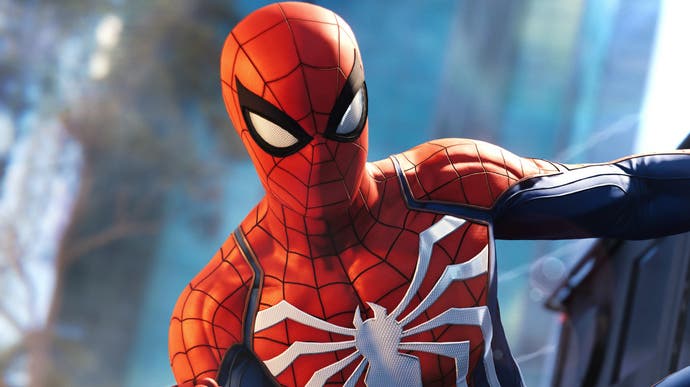Marvel's Spider-Man - Insomniac's technology swings to new heights
PS4's latest technical marvel under the microscope.
Marvel's Spider-Man continues Sony's winning run in first-party releases, once again combining state of the art technology with well-realised gameplay and a wealth of content. For our money, it's also the best and most ambitious release yet from Insomniac Games, and the most complete Spider-Man experience to date. Our focus here concentrates primarily on the game's technical aspects - if you're looking for the final word on last week's 'downgrade' flare-up, we debunked that yesterday.
From a technological standpoint, Marvel's Spider-Man represents the pinnacle of Insomniac's prowess, albeit one that shows a clear process of evolution starting from Xbox One exclusive Sunset Overdrive, gaining considerable polish and refinement in 2016's Ratchet and Clank. By marrying the vast selection of gadgets and action-driven gameplay of Ratchet with the open world traversal systems of Sunset Overdrive - and the story-telling of the Resistance games - Spider-Man feels like the apex of everything Insomniac has worked to build over the past decade.
It starts with the characters - Spider-Man takes a stylised approach to design, as you'd expect from something based on a comic book character, but that doesn't mean the level of detail isn't exceptionally high. Spidey's suit stands out with superb texture work - the material reflects light properly and small details are visible throughout. In close-ups with various characters throughout the story, there is also a lot of detail revealed: sub-surface scattering is used during cut-scenes, allowing light to penetrate the skin and scatter about realistically beneath the surface. Meanwhile, materials-based lighting is remarkable - the leather of Mary Jane's jacket is a stand-out example.
Then there is the animation - in-game, Spider-Man features an impressive range of animation applied to major and minor characters alike. Players have a lot of mobility and combat options, while animation is smoothly blended, giving some degree of continuity to highly complex strings of attacks. It's also exceptional while web-swinging through the city, to the point where it's fun to vary your style to see what kind of variation in animation you get - watching Spider-Man spin through the legs of a water tower was one example of bespoke animation you'll only get by experimenting with how you target your webbing. At ground level, holding R2 invokes parkour - which is particularly fun when it comes to jumping and rolling over cars.
Cutscenes also look superb thanks to carefully crafted animation, smooth camera work and Insomniac's super impressive per-pixel motion blur - which might just be the best implementation I've seen to date. This first appeared in Sunset Overdrive and Ratchet and Clank on PS4 and it has returned for Spider-Man with a high sample count and a perfect shutter speed. Most importantly, it's tuned for gameplay - while swinging through the city, edges of the screen and objects are properly blurred but the middle portion of the image remains sharp allowing players to see what's coming. If you really don't like it, though, the options menu allows you to adjust its intensity.
This is coupled with generally excellent image quality. Spider-Man utilises Insomniac's temporal injection technique featured in Ratchet and Clank on PS4 Pro. While there is precious little information available on this technique, Insomniac seems to prefer this over typical checkerboarding. The results are mostly excellent - completely avoiding the stippling that can crop up with checkerboard rendering and producing detail that exceeds raw pixel count. But even here, Insomniac has pushed the boat out by implementing DRS - dynamic resolution scaling. On PS4 Pro, I saw a top-end of 3456x1944, with a 2560x1368 minimum. This lowest value appears to be extremely rare, however, with the average resolution presenting around 1584p instead. Base PlayStation 4 targets and sustains 1080p, but we did note a cutscene at 900p, suggesting adaptive resolution is in place there too.
As expected, bearing in mind Ratchet and Clank's remarkable post-process pipeline, the latest iteration of the Insomniac engine excels here too in terms of lighting, grading, depth of field and other effects - but what sets this game apart, and what a Spider-Man game really needs, is an emphasis on environment detail. While most of the game centres on swinging rapidly through the world, if you stop and look around, you might be surprised by how much detail is present at street level - the NPC count is dense (with a lot of different behaviours on display, particularly when random crime events kick in) and although vehicle variety is limited, the sheer amount of cars Insomniac packs into the scene is impressive - and every car has its own randomised number plate.
Building facades feature carefully modelled details with a lot of visible geometry and high-resolution, varied textures, backed by some remarkably high resolution reflections. These are of the cube-map variety, transitioning between samples depending on height. For ground reflections - like puddles - screen-space reflections are used in addition to cube-maps. Water is used liberally throughout the game: the entire city can be soaked after a downpour, while water simulation on the ocean is also highly impressive - you can even take Spider-Man for a dip if you want!
When it comes to lighting, Spider-Man is perhaps Insomniac's Games finest work to date, but it has its limits. The game features multiple times of day and features great usage of direct and indirect illumination, but the biggest limiting factor here stems from those times of day - similar to InFamous Second Son, Spider-Man does not feature a real-time TOD transition. Instead, changes in time are tied to story events, with a limited number of pre-baked lighting configurations. I'd imagine this choice was made to support improved scene illumination - while it's possible to blend between different pre-calculated light passes (as seen in Horizon Zero Dawn), it's not always optimal and may not have worked well in a large urban environment.
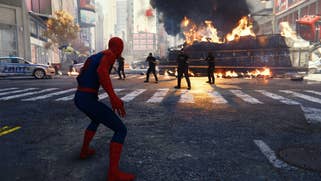
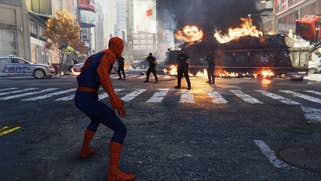



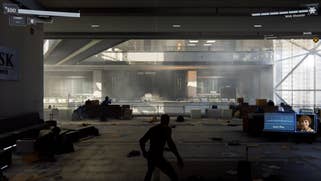
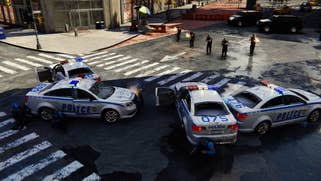

Still, the benefit of this approach is that lighting conditions are always beautiful and the scenes set at dusk in particular are simply spectacular to behold. Spider-Man also features a robust volumetric lighting system designed to simulate the scattering of light through the atmosphere. This implementation is impressive due to the resolution of the effect - in many games, it's possible to make out the underlying resolution but here, it's virtually seamless. Shadow quality is also strong for an open world game like this: world shadows stretch out into the distance with clean filtering and smooth transitions between cascade levels. Objects such as trees feature suitably high-resolution shadows while character and objects sit realistically within the environment.
Adding further to the sense of depth in the city itself is the inclusion of modelled interiors on buildings - a really cute feature I enjoyed investigating. It's achieved quite cheaply and there's no real continuity if you skirt around the edge of a building, but it's a great example of how a simple effect can deliver quite an impact. There's the sense that every building gets its own interior, but for the most part we're looking at 'box' instances with simple textures on each visible plane. Meanwhile, at ground level, where this effect wouldn't hold up to close-range scrutiny, many of the shops and restaurants do actually have fully modelled interiors, with NPCs.
Spider-Man switches between exterior and interior locations, usually punctuated with a sub-10 second loading time. Moving into more enclosed spaces, Insomniac plays more with stealth in a manner similar to Arkham Asylum - Spidey can web around the environments, pulling off stealth takedowns. It's a change of pace to the usual, more hectic combat but the point here is that the engine is capable of not only handling a large city, but it's also well suited to bespoke missions - something I've felt was lacking in many previous Spider-Man titles. The end result is that you get both an open world experience and the polish of a linear single-player game in one package.
I've not mentioned performance so far and that's because it's basically a non-event - a good thing, really. Regardless of platform, Spider-Man targets 30 frames per second, using its motion blur to help avoid the hand-cranked feel you might otherwise get. There are occasional frame-time spikes but it's quite uncommon and while there are genuine drops as well, these are all minor. As an open world game, there is a lot of variation in terms of load so based on these results, it's likely that small dips like this could occur at any point during the game. The same goes for the base PlayStation 4, which delivers performance very much in line with the PS4 Pro. It's 30fps in most scenes with an occasional frame-time spike or dip. In our tests, resolution and minor shading variations are essentially the only difference between systems - but despite the post-heavy aesthetic, Pro clearly delivers a cleaner image.
Overall, this is an extremely strong release from Sony and Insomniac - a combination of a highly accomplished studio pushing itself to a new level, the technical and gameplay elements backed by a clear and strong love of the character and mythology. The developer deserves kudos for preserving the core DNA of the character, the strong supporting cast and rogue's gallery, while not being afraid to give everything a new spin and a fresh perspective. We had a great time with this title and it's highly recommended.
